Author Biographies 7
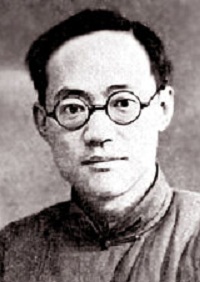 Pa Chin
Pa Chin
1904-2005
Li Yaotang (November 25, 1904-October 17, 2005) is considered to be one of the most important and widely read Chinese writers of the 20th century. He wrote under the pen names of Ba Jin, Pa Chin, Li Fei-Kan, Li Pei-Kan and Pa Kin. Ba Jin started composing his first works in the late 1920s.
Born in Chengdu, Sichuan, Li was born into a scholarly family of officials. In 1920, Li enrolled, with an elder brother, in the Chengdu Foreign Language Specialist School to study English. It was there he first engaged in the organization of literary journal, Crescent, and wrote a number of vers libre. Joining an anarchist organization, the Equality Society, Li became its most prominent member, actively distributing propaganda leaflets. Three years later, Li moved to Shanghai and subsequently to Dongnan University. There he managed to master Esperanto within one year of diligent study and took part in leftist socialist strikes. While remaining active in the anarchist movement, he wrote a pamphlet about the Chicago Anarchist Martyrs.
After graduation, he left with a friend aboard a liner on February 15, 1927 for Paris, France, for further studies. He described his life there as boring and monotonous. It was partly owing to boredom that Li began to write his first novel, Miewang (Destruction), on a jotterbook. In France, Li continued his anarchist activism, translated many anarchist works, including Kropotkin’s Ethics, into Chinese, which was mailed back to Shanghai anarchist magazines for publication.
On his return to Shanghai in 1928, Ba Jin continued writing and working on translations. His first novel, Destruction, was released serially by Fiction Monthly in 1929, a foremost literary magazine, and earned him many admirers. During the next 10 years, Li acted as editor to several important publishing firms and periodicals, as well as composing the works he is best known for – The Family (1931), The Love Trilogy Fog (1931), Rain (1933) and Lightning (1935), the novellas Autumn in Spring and A Dream of the Sea, the short story collection, Mengya (Germination), and prose writings in Fuchou (Vengeance) and Shen, Gui, Ren (Gods, Ghosts and Men).
Ba Jin suffered from Parkinson’s Disease since 1983, an ailment that almost completely debilitated him in his later years. The illness confined him to a hospital unable to speak and walk in the last few years of his life. Ba Jin died of cancer in Shanghai at the age of 100.
Source: http://en.wikipedia.org/wiki/Ba_Jin
 Bibliography
Bibliography
Press your browser’s BACK button to return to the previous page.
 Kate Chopin
Kate Chopin
1851-1904
Kate Chopin, born Katherine O’Flaherty (February 8, 1851-August 22, 1904) in St. Louis, Missouri, was an American author of short stories and novels. She is now considered by some to have been a forerunner of feminist authors of the 20th century.
In 1855, at five and a half, she was sent to The Sacred Heart Academy, a Catholic boarding school in St. Louis. Her father was killed two months later when a train on which he was riding crossed a bridge that collapsed. For the next two years she lived at home with her mother, grandmother and great-grandmother, all of them widows. Her great-grandmother, Victoria Verdon Charleville, oversaw her education and taught her French, music and the gossip on St. Louis women of the past. Kate O’Flaherty grew up surrounded by smart, independent, single women. They were also savvy and came from a long line of ground-breaking women. Until Kate was 16, no married couples lived in her home, although it was full of brothers, uncles, cousins and boarders. In 1865, she returned to Sacred Heart Academy and began keeping a commonplace book. She graduated in 1868 but did not achieve any particular distinction.
In 1870, at the age of 20, she married Oscar Chopin and settled in New Orleans. Chopin had all six of her children by 29. In 1879, Oscar Chopin’s cotton brokerage failed and the family moved to Cloutierville in south Natchitoches Parish to manage several small plantations and a general store. They became active in the community and Chopin absorbed much material for her future writing, especially regarding the Creole culture of the area.
When Oscar Chopin died in 1882, he left Kate with $12,000 in debts. Although Chopin made an honest effort to keep her late husband’s plantation and general store alive, two years later she sold her Louisiana business. Her mother implored her to move back to St. Louis, so Chopin did and the children gradually settled into life in St. Louis, where finances were no longer a concern. The following year, Chopin’s mother died.
Chopin now found herself in a state of depression after the loss of both her husband and her mother. Her obstetrician and family friend, Dr. Frederick Kolbenheyer, felt that writing would be a source of therapeutic healing for Kate during her hard times. He understood that writing could be a focus for her extraordinary energy, as well as a source of income.
By the early 1890s, Kate Chopin was writing short stories, articles and translations that appeared in periodicals, including The St. Louis Post-Dispatch. She was quite successful and placed many of her publications in literary magazines. In 1899, her second novel, The Awakening, was published and the book was criticized because of its moral as well as its literary standards.
While visiting the St. Louis World’s Fair on August 20, 1904, Chopin suffered a brain hemorrhage and died two days later, at the age of 53. She was interred in the Calvary cemetery in St. Louis.
Source: http://en.wikipedia.org/wiki/Kate_Chopin
 Bibliography
Bibliography
Press your browser’s BACK button to return to the previous page.
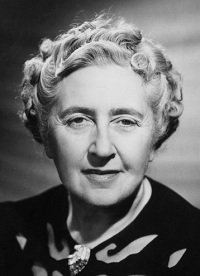 Agatha Christie
Agatha Christie
1890-1976
Dame Agatha Christie (September 15, 1890-January 12, 1976) was a British crime writer of novels, short stories and plays. She also wrote romances under the name Mary Westmacott, but she is best remembered for her 66 detective novels, 14 short story collections (especially those featuring Hercule Poirot or Miss Jane Marple) and her successful West End plays.
Agatha Christie published two autobiographies: A posthumous one covering childhood to old age; and another chronicling several seasons of archaeological excavation in Syria and Iraq with her second husband, archaeologist Max Mallowan. The latter was published in 1946 with the title, Come, Tell Me How You Live.
Christie’s stage play, The Mousetrap, holds the record for the longest initial run: It opened at the Ambassadors Theatre in London on November 25, 1952 and, as of 2012, was still running after more than 24,600 performances.
In 1955, Christie was the first recipient of the Mystery Writers of America’s highest honor, the Grand Master Award and, in the same year, Witness for the Prosecution was given an Edgar Award by the MWA for Best Play. Many of her books and short stories have been filmed and many have been adapted for television, radio, video games and comics.
Agatha Christie died on January 12, 1976 at age 85 from natural causes.
Source: http://en.wikipedia.org/wiki/Agatha_Christie
 Bibliography
Bibliography
Press your browser’s BACK button to return to the previous page.
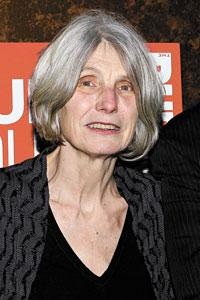 Caryl Churchill
Caryl Churchill
1938-
Caryl Churchill (born September 3, 1938) is an English dramatist known for her use of non-naturalistic techniques and feminist themes, the abuses of power and sexual politics. She is acknowledged as a major playwright in the English language and a leading female writer. Her early work developed Brecht’s modernist dramatic and theatrical techniques of “Epic theatre” to explore issues around gender and sexuality. From A Mouthful of Birds (1986) onward, she began to experiment with forms of dance theatre, incorporating techniques developed from the performance tradition initiated by Artaud with his “Theatre of Cruelty.” This move away from a clear Fabel dramaturgy toward increasingly fragmented and surrealistic narratives characterizes her work as postmodernist.
Churchill was born in London, England, the daughter of Jan, a fashion model, and Robert Churchill, a political cartoonist. After World War II her family emigrated to Montreal, Canada, when she was 10 years old, where she attended Trafalgar School for Girls. She returned to England to attend university and graduated from Lady Margaret Hall, a women’s college of the Oxford University, in 1960 with a B.A. degree in English Literature. She also began her career there. Her four earliest plays – Downstairs (produced 1958),You’ve No Need to be Frightened, Having a Wonderful Time (1960) and Easy Death (produced 1962) – were performed by Oxford-based theatrical ensembles and student drama groups.
It was while raising a family in 1960s and ’70s that Churchill began to write short radio dramas and then television plays for BBC radio, including The Ants (1962), Not, Not, Not, Not Enough Oxygen (1971) and Schreber’s Nervous Illness (1972). She also wrote television plays for the BBC, including The After Dinner Joke (1978) and Crimes (1982). These, as well as some of her radio plays, have been adapted for the stage.
Source: http://en.wikipedia.org/wiki/Caryl_Churchill
 Bibliography
Bibliography
Press your browser’s BACK button to return to the previous page.
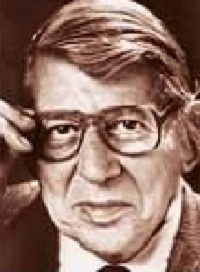 John Ciardi
John Ciardi
1916-1986
John Anthony Ciardi (CHAR-dee) (June 24, 1916-March 30, 1986) was an American poet, translator and etymologist. While primarily known as a poet, he also translated Dante’s Divine Comedy, wrote several volumes of children’s poetry, pursued etymology, contributed to The Saturday Review as a columnist and longtime poetry editor and directed the Bread Loaf Writers’ Conference in Vermont. In 1959, Ciardi published a book about how to read, write and teach poetry, How Does a Poem Mean?, which has proved to be among the most-used books of its kind. At the peak of his popularity in the early 1960s, Ciardi also had a network television program on CBS, Accent. Ciardi’s impact on poetry is perhaps best measured through the younger poets he influenced as a teacher and as editor of The Saturday Review.
Ciardi was born at home in Boston’s Little Italy. After the death of his father in 1919, he was raised by his Italian mother (who was illiterate) and his three older sisters, all of whom scrimped and saved until they had enough money to send him to college. In 1921, two years after his father was killed in an automobile accident, the family moved to Medford, Massachusetts, where the young Ciardi peddled vegetables to the neighbors and attended public schools. Ciardi began his higher studies at Bates College in Lewiston, Maine, but transferred to Tufts University in Boston, where he studied under the poet John Holmes. He received his degree in 1938 and won a scholarship to the University of Michigan, where he obtained his master’s degree the next year and won the first of many awards for his poetry, including the prestigious Hopwood Award.
Ciardi taught briefly at the University of Kansas City before joining the U.S. Army Air Force in 1942, becoming a gunner on B-29s and flying some 20 missions over Japan before being transferred to desk duty in 1945. He was discharged in October 1945 with the rank of Technical Sergeant and with both the Air Medal and Oak Leaf Cluster. Ciardi’s war diary, Saipan, was published posthumously in 1988. After the war, Ciardi returned to UKC for the spring semester 1946, where he met and married Myra Judith Hostetter (a journalist and journalism instructor) on July 28. Immediately after the wedding, the couple left for a third-floor apartment at Ciardi’s Medford, Massachusetts, home that his mother and sisters had put together for the man of their family and his new bride.
John Ciardi was a longtime resident of Metuchen, New Jersey. He died on Easter Sunday in 1986 of a heart attack.
Source: http://en.wikipedia.org/wiki/John_Ciardi
 Bibliography
Bibliography
Press your browser’s BACK button to return to the previous page.
 Marcus Tullius Cicero
Marcus Tullius Cicero
106-43 BC
Marcus Tullius Cicero was born on January 3, 106 BC and was murdered on December 7, 43 BC. His life coincided with the decline and fall of the Roman Republic. He was an important actor in many of the significant political events of his time and his writings are now a valuable source of information to us about those events.
He was, among other things, an orator, lawyer, politician and philosopher. Making sense of his writings and understanding his philosophy requires us to keep that in mind. He placed politics above philosophical study; the latter was valuable in its own right but was even more valuable as the means to more effective political action. The only periods of his life in which he wrote philosophical works were the times he was forcibly prevented from taking part in politics.
Source: http://www.iep.utm.edu/cicero/
 Bibliography
Bibliography
Press your browser’s BACK button to return to the previous page.
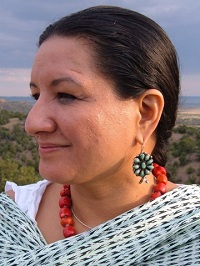 Sandra Cisneros
Sandra Cisneros
1954-
Sandra Cisneros (born December 20, 1954) is an American writer best known for her acclaimed first novel, The House on Mango Street (1984), and her subsequent short story collection, Woman Hollering Creek and Other Stories (1991). She is the recipient of numerous awards, including a National Endowment for the Arts Fellowship, and is regarded as a key figure in Chicana literature.
Cisneros’ early life provided many experiences she would later draw on as a writer: She grew up as the only daughter in a family of six brothers, which often made her feel isolated, and the constant migration of her family between Mexico and the U.S. instilled in her the sense of “always straddling two countries … but not belonging to either culture.” Cisneros’ work deals with the formation of Chicana identity, exploring the challenges of being caught between Mexican and Anglo-American cultures, facing the misogynist attitudes present in both these cultures and experiencing poverty. For her insightful social critique and powerful prose style, Cisneros has achieved recognition far beyond Chicano and Latino communities, to the extent that The House on Mango Street has been translated worldwide and is taught in American classrooms as a coming-of-age novel.
Cisneros has held a variety of professional positions – working as a teacher, a counselor, a college recruiter, a poet-in-the-schools and an arts administrator – and has maintained a strong commitment to community and literary causes. In 1998, she established the Macondo Foundation, which provides socially conscious workshops for writers, and in 2000 she founded the Alfredo Cisneros Del Moral Foundation, which awards talented writers connected to Texas.
Source: http://en.wikipedia.org/wiki/Sandra_Cisneros
 Bibliography
Bibliography
Press your browser’s BACK button to return to the previous page.
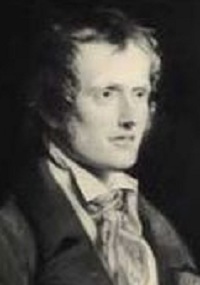 John Clare
John Clare
1793-1864
John Clare (July 13, 1793-May 20, 1864) was an English poet, born the son of a farm laborer, who came to be known for his celebratory representations of the English countryside and his lamentation of its disruption.
Clare was born in Helpstone (now Helpston) which, at the time of his birth, was in the Soke of Peterborough, Northamptonshire. He became an agricultural laborer while still a child; however, he attended school in Glinton church until he was 12.
Clare had bought a copy of Thomson’s Seasons and began to write poems. In an attempt to hold off his parents’ eviction from their home, Clare offered his poems to a local bookseller named Edward Drury. Drury sent Clare’s poetry to his cousin, John Taylor, of the publishing firm of Taylor & Hessey, who had published the work of John Keats. Taylor published Clare’s Poems Descriptive of Rural Life and Scenery in 1820. This book was highly praised and, in the next year, his Village Minstrel and Other Poems were published.
His last work, the Rural Muse (1835), was noticed favorably by Christopher North and other reviewers, but this was not enough to support his wife and seven children. Clare’s mental health began to worsen. As his alcohol consumption steadily increased along with his dissatisfaction with his own identity, Clare’s behavior became more erratic and, in July 1837, on the recommendation of his publishing friend, John Taylor, Clare went of his own volition to Dr. Matthew Allen’s High Beach Private Asylum near Loughton in Epping Forest.
In 1841, Clare left the asylum in Essex and walked home. Between Christmas and New Year in 1841, Clare was committed to the Northampton General Lunatic Asylum (known since as St. Andrew’s Hospital). He remained there for the rest of his life, encouraged and helped to write. Here he wrote possibly his most famous poem, “I Am.”
He died on May 20, 1864, in his 71st year.
Source: http://en.wikipedia.org/wiki/John_Clare
 Bibliography
Bibliography
Press your browser’s BACK button to return to the previous page.
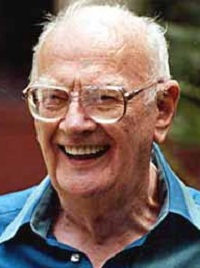 Arthur C. Clarke
Arthur C. Clarke
1917-2008
Sir Arthur Charles Clarke (December 16, 1917-March 19, 2008) was a British science fiction author, inventor and futurist, famous for his short stories and novels, among them 2001: A Space Odyssey (1968), and as a host and commentator in the British television series, Mysterious World.
Clarke served in the Royal Air Force as a radar instructor and technician from 1941-1946. He proposed a satellite communication system in 1945 that won him the Franklin Institute Stuart Ballantine Gold Medal in 1963. He was the chairman of the British Interplanetary Society from 1947-1950 and again in 1953.
While Clarke had a few stories published in fanzines between 1937 and 1945, his first professional sale appeared in Astounding Science Fiction in 1946: “Loophole” was published in April, while “Rescue Party,” his first sale, was published in May. Along with his writing, Clarke briefly worked as Assistant Editor of Science Abstracts (1949) before devoting himself to writing full-time from 1951 onward. Clarke also contributed to the Dan Dare series published in Eagle, and his first three published novels were written for children.
In 1948, he wrote the basis for 2001: A Space Odyssey, which introduced a more cosmic element to Clarke’s work. In the cases of The City and the Stars, Childhood’s End and the 2001 series, this encounter produces a conceptual breakthrough that accelerates humanity into the next stage of its evolution.
Clarke emigrated to Sri Lanka in 1956 largely to pursue his interest in scuba diving; that year, he discovered the underwater ruins of the ancient Koneswaram temple in Trincomalee. Living in Sri Lanka and learning its history inspired the backdrop for his novel, The Fountains of Paradise.
He was knighted by Queen Elizabeth II in 1998 and was awarded Sri Lanka’s highest civil honor, Sri Lankabhimanya, in 2005.
Clarke died in Sri Lanka on March 19, 2008 after suffering from respiratory failure.
Source: http://en.wikipedia.org/wiki/Arthur_C._Clarke
 Bibliography
Bibliography
Press your browser’s BACK button to return to the previous page.
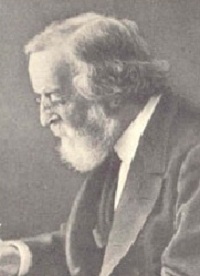 James Freeman Clarke
James Freeman Clarke
1810-1888
James Freeman Clarke (April 4, 1810-June 8, 1888) was an American preacher and author. Born in Hanover, New Hampshire, Clarke attended the public Latin school of Boston, graduated from Harvard College in 1829 and Harvard Divinity School in 1833. Ordained into the Unitarian church, he first became an active minister at Louisville, Kentucky, then a slave state, and soon threw himself into the national movement for the abolition of slavery.
In 1839, he returned to Boston, where he and his friends established the Church of the Disciples (1841), which brought together a body of people to apply the Christian religion to social problems of the day. One of the features that distinguished his church was Clarke’s belief that ordination could make no distinction between him and them. They also were called to be ministers of the highest religious life. Of this church he was the minister from 1841 until 1850 and from 1854 until his death. He was also secretary of the Unitarian Association and, in 1867-1871, professor of natural religion and Christian doctrine at Harvard.
From the beginning of his religiously active life, he wrote freely for the press and published 28 books and more than 120 pamphlets. He edited The Western Messenger, a magazine intended to carry to readers in the Mississippi Valley simple statements of liberal religion, and what were then the most radical appeals to national duty and the abolition of slavery. Copies of this magazine are now of value to collectors as they contained the earliest printed poems of Ralph Waldo Emerson, a personal friend and distant cousin. Clarke became a member of the Transcendental Club alongside Emerson and several others. Many of Clarke’s earlier published writings were addressed to the immediate need of establishing a larger theory of religion than that espoused by people who were still under the influence of Calvinism or, as an American phrase states, the “hard-shelled Churches.”
For The Western Messenger, Clarke requested written contributions from Margaret Fuller. Clarke published Fuller’s first literary review – criticisms of recent biographies of George Crabbe and Hannah More. She later became the first full-time book reviewer in journalism working for Horace Greeley’s New York Tribune. After Fuller’s death in 1850, Clarke worked with William Henry Channing and Emerson as editors of The Memoirs of Margaret Fuller, published in February 1852. The trio censored or reworded many of Fuller’s letters; they believed the public interest in Fuller would be temporary and that she would not survive as a historical figure. Nevertheless, for a time, the book was the bestselling biography of the decade and went through 13 editions before the end of the century.
In 1855, Clarke purchased the former site of Brook Farm, intending to start a new Utopian community there. This never came to pass; instead, the land was offered to President Abraham Lincoln during the American Civil War and the Second Massachusetts Regiment used it for training, naming it “Camp Andrew.”
His work is sometimes called controversial. He declared that the business of the Church is eirenic and not polemic. Such books as Orthodoxy: Its Truths and Errors (1866) have been read more largely by members of orthodox churches than by Unitarians. In the great moral questions of his time, Clarke was seen as an advocate of human rights. Tempered and moderate in his views on life, he was a reformer and a conciliator and never had to carry a pistol the way fellow preacher Theodore Parker did. He published few verses but at heart was a poet. A diligent scholar, among the books by which he became known is one called Ten Great Religions (1871-1883). James Freeman Clarke was one of the first Americans to explore and write about Eastern religions.
Source: http://en.wikipedia.org/wiki/James_Freeman_Clarke
 Bibliography
Bibliography
Press your browser’s BACK button to return to the previous page.
 Michelle Cliff
Michelle Cliff
1946-2016
Michelle Cliff (November 2, 1946-June 12, 2016) was a Jamaican-American author whose notable works included No Telephone to Heaven, Abeng and Free Enterprise.
Cliff also wrote short stories, prose poems and works of literary criticism. Her works explore the various, complex identity problems that stem from post-colonialism, as well as the difficulty of establishing an authentic, individual identity despite race and gender constructs.
Cliff was born in Kingston, Jamaica, in 1946 and moved with her family to New York City three years later. She was educated at Wagner College and the Warburg Institute at the University of London. She has held academic positions at several colleges including Trinity College and Emory University.
Cliff was a contributor to the Black feminist anthology, Home Girls.
From 1999 on, Cliff was living in Santa Cruz, California. She died of liver failure on June 12, 2016.
Source: http://en.wikipedia.org/wiki/Michelle_Cliff
 Bibliography
Bibliography
Press your browser’s BACK button to return to the previous page.
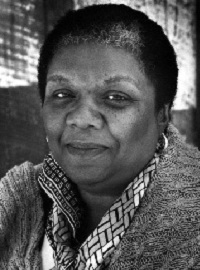 Lucille Clifton
Lucille Clifton
1935-2010
Lucille Clifton was born in Depew, New York, on June 27, 1936. Her first book of poems, Good Times, was rated one of the best books of the year by The New York Times in 1969.
Clifton remained employed in state and federal government positions until 1971, when she became a writer in residence at Coppin State College in Baltimore, Maryland, where she completed two collections: Good News about the Earth (1972) and An Ordinary Woman (1974).
She went on to write several other collections of poetry, including: Voices (2008); Mercy (2004); Blessing the Boats: New and Selected Poems, 1988-2000 (2000), which won the National Book Award; The Terrible Stories (1995), which was nominated for the National Book Award; The Book of Light (1993); Quilting: Poems, 1987-1990 (1991); and Next: New Poems (1987).
Her collection, Good Woman: Poems and a Memoir, 1969-1980 (1987), was nominated for the Pulitzer Prize; Two-Headed Woman (1980), also a Pulitzer Prize nominee, was the recipient of the University of Massachusetts Press Juniper Prize. She also wrote Generations: A Memoir (1976) and more than 16 books for children, written expressly for an African-American audience.
Her honors include an Emmy Award from the American Academy of Television Arts and Sciences, a Lannan Literary Award, two fellowships from the National Endowment for the Arts, the Shelley Memorial Award, the YM-YWHA Poetry Center Discovery Award and the 2007 Ruth Lilly Prize.
In 1999, she was elected a Chancellor of the Academy of American Poets. She served as Poet Laureate for the State of Maryland and Distinguished Professor of Humanities at St. Mary’s College of Maryland.
After a long battle with cancer, Lucille Clifton died on February 13, 2010, at the age of 73.
Source: http://www.poets.org/poet.php/prmPID/79
 Bibliography
Bibliography
Press your browser’s BACK button to return to the previous page.
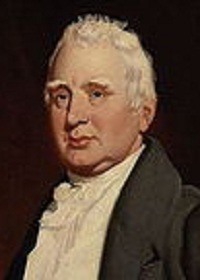 William Cobbett
William Cobbett
1763-1835
William Cobbett (March 9, 1763-June 18, 1835) was an English pamphleteer, farmer and journalist who was born in Farnham, Surrey. He believed that reforming Parliament and abolishing the rotten boroughs would help to end the poverty of farm laborers, and he attacked the borough-mongers, sinecurists and “tax-eaters” relentlessly. He was also against the Corn Laws, a tax on imported grain.
Early in his career, he was a loyalist supporter of King and Country. Later, he joined and successfully publicized the radical movement, which led to the Reform Bill of 1832 and to his winning the parliamentary seat of Oldham. Although he was not a Catholic, he became a fiery advocate of Catholic Emancipation in Britain.
Through the seeming contradictions in Cobbett’s life, two things stayed constant: an opposition to authority and a suspicion of novelty. He wrote many polemics on subjects from political reform to religion, but is best known for his book from 1830, Rural Rides, which is still in print today.
He was a gifted writer, though later generations have taken offence at his some of his supposedly anti-Semitic and racist views. He is considered to have begun as an inherently conservative journalist who, angered by the corrupt British political establishment, became increasingly radical and sympathetic to anti-government ideals. He provides an alternative view of rural England in the age of an Industrial Revolution with which he was not in sympathy.
He was buried in the churchyard of St. Andrew’s Parish Church, Farnham.
Source: http://en.wikipedia.org/wiki/William_Cobbett
 Bibliography
Bibliography
Press your browser’s BACK button to return to the previous page.
 Paulo Coelho
Paulo Coelho
1947-
Paulo Coelho (born August 24, 1947) is a Brazilian lyricist and novelist. He was born in Rio de Janeiro, Brazil. At his parents’ wishes, Coelho enrolled in law school and abandoned his dream of becoming a writer. One year later, he dropped out and lived life as a hippie, traveling through South America, North Africa, Mexico and Europe and becoming immersed in the drug culture of the 1960s.
Upon his return to Brazil, Coelho worked as a songwriter, composing lyrics for Elis Regina, Rita Lee and Brazilian icon Raul Seixas. Coelho also worked as an actor, journalist and theatre director before pursuing his writing career.
In 1982, Coelho published his first book, Hell Archives, which failed to make any significant impact. In 1986, he contributed to The Practical Manual of Vampirism, although he later tried to take it off the shelves since he considered it “of bad quality.” After making the pilgrimage to Santiago de Compostela in 1986, Coelho wrote The Pilgrimage. The following year, Coelho wrote The Alchemist and published it through a small Brazilian publishing house. He subsequently found a bigger publishing house and, with the publication of his next book, Brida, The Alchemist became a Brazilian bestseller.
Coelho has generally written one novel every two years, including By the River Piedra I Sat Down and Wept, The Fifth Mountain, Veronika Decides to Die, The Devil and Miss Prym, Eleven Minutes, Like the Flowing River, The Valkyries and The Witch of Portobello.
In total, Coelho has published 30 books. Three of them – The Pilgrimage,The Valkyries and Aleph – are autobiographical, while the majority of the rest are fictional, although rooted in his life experiences. Others, like Maktub and The Manual of the Warrior of Light, are collections of essays, newspaper columns or selected teachings.
Source: http://en.wikipedia.org/wiki/Paulo_Coelho
 Bibliography
Bibliography
Press your browser’s BACK button to return to the previous page.
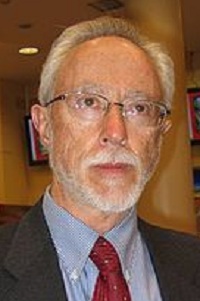 J.M. Coetzee
J.M. Coetzee
1940-
John Maxwell “J.M.” Coetzee (born February 9, 1940) is an author and academic from South Africa. He is now an Australian citizen and lives in Adelaide, South Australia. A novelist and literary critic as well as a translator, Coetzee has won the Booker Prize twice and was awarded the 2003 Nobel Prize in Literature.
Coetzee was born in Cape Town, Cape Province, Union of South Africa, to parents of Afrikaner descent. Coetzee spent most of his early life in Cape Town and in Worcester in Cape Province. Coetzee attended St. Joseph’s College, a Catholic school in the Cape Town suburb of Rondebosch, and later studied mathematics and English at the University of Cape Town, receiving his Bachelor of Arts with Honors in English in 1960 and his Bachelor of Arts with Honors in Mathematics in 1961.
Coetzee relocated to the United Kingdom in 1962, where he worked as a computer programmer, staying until 1965. In 1963 he was awarded a Master of Arts degree from the University of Cape Town for a dissertation on the novels of Ford Madox Ford. Coetzee went to the University of Texas at Austin, in the United States, on the Fulbright Program in 1965. He received a Ph.D in linguistics there in 1969.
In 1968, he began teaching English literature at the State University of New York at Buffalo, where he stayed until 1971. It was at Buffalo that he started his first novel, Dusklands. He then returned to South Africa to teach English literature at the University of Cape Town. He was promoted to Professor of General Literature in 1983 and was Distinguished Professor of Literature between 1999 and 2001.
Upon retiring in 2002, Coetzee relocated to Adelaide, Australia, where he was made an honorary research fellow at the English Department of the University of Adelaide. He served as professor on the Committee on Social Thought at the University of Chicago until 2003.
In addition to his novels, he has published critical works and translations from Dutch and Afrikaans.
Source: http://en.wikipedia.org/wiki/J._M._Coetzee
 Bibliography
Bibliography
Press your browser’s BACK button to return to the previous page.
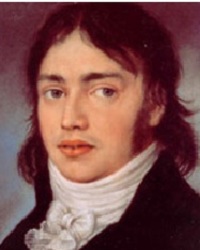 Samuel Taylor Coleridge
Samuel Taylor Coleridge
1772-1834
Samuel Taylor Coleridge was born October 21, 1772, at Ottery St. Mary’s, Devonshire, the youngest of 14 children. His father, John Coleridge, the parish vicar, died in 1781 just before Coleridge’s ninth birthday. He was then sent to a boarding school, Christ’s Hospital, as a charity scholar. A brilliant student, he went up to Jesus College, Cambridge, in 1791, on a small allowance provided by his brother George. Although he won a college medal in his first year for a long poem in Greek and was one of four finalists for a scholarship in his second, he was at the same time going through an adolescent crisis, experimenting with alcohol, opium and sex, and falling in love with Mary Evans, the sister of a friend.
In December 1793 he left school and joined the Dragoons (under the alias Silas Tomkyn Comerbacke) but kept falling off his horse. By the following April his brothers had found out where he was, bailed him out and convinced him to return to Cambridge. That summer (1794) he left school again and met the poet Robert Southey, with whom he planned a utopian “Pantisocracy” to be established on the banks of the Susquehanna. The plan required that each participant be married; Southey married Edith Fricker and Coleridge married her younger sister, Sara. When the plans for the Pantisocracy fell through, the two of them were trapped in an uncongenial marriage.
By now Coleridge, who was earning his keep partly as a Unitarian preacher, had begun seriously to write poetry. He became close friends with William Wordsworth and his sister, Dorothy, who moved to Alfoxden in 1797 to be near the Coleridges at Nether Stowey, and the two poets planned Lyrical Ballads, which appeared in 1798. Coleridge’s most important contribution was “The Rime of the Ancient Mariner.”
From the time of his marriage on, Coleridge was searching for a vocation that would pay the rent, although the annuity of £150 he received eased these concerns after 1798 and meant that he did not need to take up a career as a Unitarian minister.
“Dejection: An Ode,” written in 1802, expresses his despair at the loss of his creative powers. In 1804, he travelled to Sicily and Malta, working for a time as Acting Public Secretary of Malta under the Commissioner, Alexander Ball. He gave this up and returned to England in 1806. His opium addiction (he was using as much as two quarts of laudanum a week) now began to take over his life: He separated from his wife in 1808, quarrelled with Wordsworth in 1810, lost part of his annuity in 1811, put himself under the care of Dr. Daniel in 1814 and finally moved in with Dr. Gilman in Highgate, London, where the doctor and his family managed for the next 18 years to keep his demon under control.
At this same time, he was establishing himself as the most intellectual of the English Romantics, delivering an influential series of lectures about Shakespeare in the winter of 1811-12 and bringing out his Biographia Literaria in 1817.
He died on July 25, 1834.
Source: http://www.victorianweb.org/previctorian/stc/bio.html
 Bibliography
Bibliography
Press your browser’s BACK button to return to the previous page.
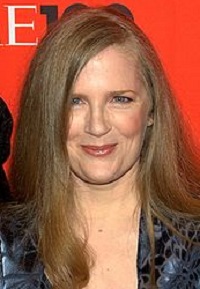 Suzanne Collins
Suzanne Collins
1963-
Suzanne Collins is an American television writer and novelist, best known for writing The Hunger Games series.
Collins is the daughter of an Air Force officer. She graduated from the Alabama School of Fine Arts and earned her M.F.A. from New York University in Dramatic Writing.
Collins’ career began in 1991 as a writer for children’s television shows. She received a Writers Guild of America nomination in animation for co-writing the critically acclaimed Christmas special, Santa, Baby!
After meeting children’s author James Proimos while working on the Kids’ WB show Generation O!, Collins was inspired to write children’s books herself. Her inspiration for Gregor the Overlander, the first book of The New York Times bestselling series, The Underland Chronicles, came from Alice in Wonderland, when she was thinking about how one was more likely to fall down a manhole than a rabbit hole, and would find something other than a tea party.
Between 2003 and 2007 she wrote the five books of the Underland Chronicles: Gregor the Overlander, Gregor and the Prophecy of Bane, Gregor and the Curse of the Warmbloods, Gregor and the Marks of Secret and Gregor and the Code of Claw. During that time, Collins also wrote a rhyming picture book, When Charlie McButton Lost Power (2005).
In September 2008 Scholastic Press released The Hunger Games, the first book of a trilogy. The trilogy’s second book, Catching Fire, was released in September 2009 and its third book, Mockingjay, was released on August 24, 2010.
Source: http://en.wikipedia.org/wiki/Suzanne_Collins
 Bibliography
Bibliography
Press your browser’s BACK button to return to the previous page.
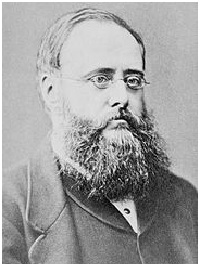 Wilkie Collins
Wilkie Collins
1824-1889
Wilkie Collins was born in London, the son of a well-known Royal Academician landscape artist, William Collins. From the ages of 12-15, he lived with his parents in Italy, which made a great impression on him. At the age of 17 he left school and was apprenticed as a clerk to a firm of tea merchants but, after five unhappy years, during which he wrote his first novel, Iolani, he entered Lincoln’s Inn to study law.
After his father’s death in 1847, Collins produced his first published book, Memoirs of the Life of William Collins, Esq., R.A. (1848), and also considered a career in painting, exhibiting a picture at the Royal Academy summer exhibition in 1849. But it was with the release of his first published novel, Antonina, in 1850 that his career as a writer began in earnest.
An instrumental event in Collins’ career occurred in March 1851 when he was introduced to Charles Dickens by a mutual friend, Augustus Egg. They became lifelong friends and collaborators. Collins became an editor of Dickens’ Household Words, several of Collins’ novels were serialized in Dickens’ weekly publication, All the Year Round and Dickens later edited and published them himself.
Collins suffered from a form of arthritis known as “rheumatic gout” and became severely addicted to the opium that he took (in the form of laudanum) to relieve the pain. As a result, he experienced paranoid delusions, the most notable being his conviction that he was constantly accompanied by a subjective doppelganger he dubbed “Ghost Wilkie.” His novel, The Moonstone, prominently features the effects of opium and opium addiction.
He died in 1889.
Source: http://en.wikipedia.org/wiki/Wilkie_Collins
 Bibliography
Bibliography
Press your browser’s BACK button to return to the previous page.
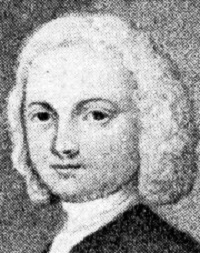 William Taylor Collins
William Taylor Collins
1721-1759
William Collins (December 25, 1721-June 12, 1759) was an English poet. Second in influence only to Thomas Gray, he was an important poet of the middle decades of the 18th century. His lyrical odes mark a turn away from the Augustan poetry of Alexander Pope’s generation and toward the Romantic era that would soon follow.
Born in Chichester, the son of a hatmaker and former mayor of the town, he was educated at Winchester and Magdalen College, Oxford. While still at the university, he published Persian Eclogues (1742), which he had begun at school. After graduating in 1743, he was undecided about his future. Failing to obtain a university fellowship, being judged by a military uncle as “too indolent even for the army” and having rejected the idea of becoming a clergyman, he settled for a literary career and was supported in London by a small allowance from his cousin, George Payne.
In 1747, he published his collection of Odes on Several Descriptive and Allegorical Subjects on which his subsequent reputation was to rest. After the Odes, although he had many projects in his head, none came to fruition. His only other poems were the ode written on Thomson’s death (1749) and the posthumously discovered and unfinished “Ode on the Popular Superstitions of the Highlands of Scotland.” An intriguing addition, now lost, is the “Ode on the Music of the Grecian Theatre,” which he described and proposed sending to the musician William Hayes in 1750. Hayes had just set “The Passions” to music as an oratorio that was received with some acclaim. This, coupled with the popularity of Persian Eclogues, a revised version of which was published the year he died, was the closest approach to success that Collins knew.
Depressed by his lack of success, aggravated by drunkenness, he sank into insanity and in 1754 was confined to McDonald’s Madhouse in Chelsea. From there he moved to the care of a married elder sister in Chichester until his death in 1759. He was buried in St. Andrew’s Church.
Source: http://en.wikipedia.org/wiki/William_Collins_%28poet%29
 Bibliography
Bibliography
Press your browser’s BACK button to return to the previous page.
 Carlo (Lorenzini) Collodi
Carlo (Lorenzini) Collodi
1826-1890
Carlo Lorenzini (November 24, 1826-October 26, 1890), better known by the pen name Carlo Collodi, was an Italian children’s writer known for the world-renowned fairy tale novel, The Adventures of Pinocchio.
Collodi was born in Florence. During the Wars of Independence in 1848 and 1860 he served as a volunteer with the Tuscan army. His active interest in political matters may be seen in his earliest literary works as well as in the founding of the satirical newspaper, Il Lampione. This newspaper was censored by order of the Grand Duke of Tuscany in 1849 but re-emerged in May 1860.
Lorenzini won fame as early as 1856 with his novel, In vapore, and had also begun intense activity on other political newspapers such as Il Fanfulla. At the same time, he was employed by the Censorship Commission for the Theatre. During this period, he composed various satirical sketches and stories, including Macchiette (1880), Occhi e nasi (1881) and Storie allegre (1887).
In 1875, he entered the domain of children’s literature with Racconti delle fate, a translation of French fairy tales by Perrault. In 1876, Lorenzini wrote Giannettino (inspired by Alessandro Luigi Parravicini’s Giannetto), the Minuzzolo and Il Viaggio per l’Italia di Giannettino, a series that explored the re-unification of Italy through the ironic thoughts and actions of the character Giannettino.
Lorenzini became fascinated by the idea of using an amiable, rascally character as a means of expressing his own convictions through allegory. In 1880, he began writing Storia di un burattino (The Story of a Marionette), also called Le avventure di Pinocchio, which was published weekly in Il Giornale dei Bambini (the first Italian newspaper for children).
Lorenzini died in Florence in 1890, unaware of the fame and popularity that awaited his work: As in the allegory of the story, Pinocchio eventually went on to lead his own independent life, distinct from that of the author.
Source: http://en.wikipedia.org/wiki/Carlo_Collodi
 Bibliography
Bibliography
Press your browser’s BACK button to return to the previous page.
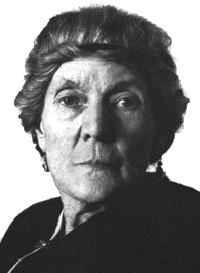 Ivy Compton-Burnett
Ivy Compton-Burnett
1884-1969
Dame Ivy Compton-Burnett (June 5, 1884-August 27, 1969) was an English novelist. She was awarded the 1955 James Tait Black Memorial Prize for her novel, Mother and Son.
The daughter of a well-known homeopathic doctor, Compton-Burnett grew up in Hove and London. Her father had 12 children by two wives and Ivy’s mother (the second wife) sent all of her stepchildren away to boarding school as soon as possible.
Apart from Dolores (1911), a traditional novel she later rejected as something “one wrote as a girl,” Compton-Burnett’s fiction deals with domestic situations in large households which, to all intents and purposes, invariably seem Edwardian. Starting with Pastors and Masters (1925), Compton-Burnett developed a highly individualistic style. Her fiction relies heavily on dialogue and demands constant attention on the reader’s part.
Compton-Burnett was appointed a Dame Commander of the Order of the British Empire (DBE). She died in 1969.
Source: http://en.wikipedia.org/wiki/Ivy_Compton-Burnett
 Bibliography
Bibliography
Press your browser’s BACK button to return to the previous page.
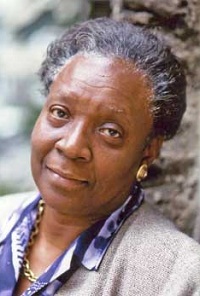 Maryse Conde
Maryse Conde
1937-
Maryse Conde (born 1937) is a Guadeloupean, French-language author of historical fiction, best known for her novel, Segu (1984-1985).
Conde was born as Maryse Boucolon at Pointe-a-Pitre, Guadeloupe, the youngest of eight children. In 1953, her parents sent her to study at Lycee Fenelon and Sorbonne in Paris, where she majored in English. In 1959, she married Mamadou Conde, a Guinean actor. After graduating, she taught in Guinea, Ghana and Senegal. In 1981, she divorced, but the following year married Richard Philcox, English language translator of most of her novels.
In addition to her writings, Conde had a distinguished academic career. In 2004, she retired from Columbia University as Professor Emerita of French. She had previously taught at the University of California, Berkeley, UCLA, the Sorbonne, the University of Virginia and the University of Nanterre.
Conde’s novels explore racial, gender and cultural issues in a variety of historical eras and locales, including the Salem witch trials in I, Tituba: Black Witch of Salem (1992) and the 19th century Bambara Empire of Mali in Segu (1987). Her novels trace the relationships between African peoples and the diaspora, especially the Caribbean. She has kept considerable distance from most Caribbean literary movements, such as Negritude and Creolite, and has often focused on topics with strong feminist concerns. Her recent writings have become increasingly autobiographical, such as Memories of My Childhood and Victoire, a biography of her grandmother. Who Slashed Celinaire’s Throat also shows traces of her paternal great-grandmother.
Source: http://en.wikipedia.org/wiki/Maryse_Cond%C3%A9
 Bibliography
Bibliography
Press your browser’s BACK button to return to the previous page.
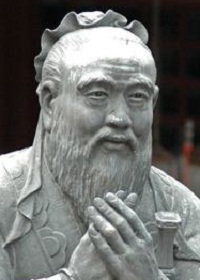 Confucius
Confucius
551-479 BC
Confucius, literally “Master Kong,” (traditionally September 28, 551 BC-479 BC) was a Chinese thinker and social philosopher whose teachings and philosophy have deeply influenced Chinese, Korean, Japanese and Vietnamese thought and life.
The formal name of Confucius was Kong Qiu, and he was also called Zhongni. He was born in 551 BC in the Lu State in the later days of the Spring and Autumn Period. Confucius was from a warrior family. His father, Shulianghe, was a famous warrior who had military exploits in two battles and owns a fiefdom. Confucius lost his father when he was three years old, and then his mother Yan Zhengzai took him and left the fiefdom because, as a concubine, she wanted to avoid mistreatment from Shulianghe’s formal wife. Thus, Confucius lived in poverty with his mother since childhood. With the support and encouragement of his mother, Confucius was very diligent in his studies.
When Confucius was 17 years old, his mother died of illness and overwork. Three years later, Confucius married a young woman who was from the Qiguan family of the Song state. Though he had a mild-tempered wife who loved him, he left his family to strive for his ideals. Confucius wanted to revive the perfect virtue of Huaxia and the classical properties of the Western Zhou Dynasty to build a grand harmonious and humanistic society.
His philosophy emphasized personal and governmental morality, correctness of social relationships, justice and sincerity. These values gained prominence in China over other doctrines, such as Legalism or Taoism, during the Han Dynasty (206 BC-220 BC). Confucius’ thoughts have been developed into a system of philosophy known as Confucianism. It was introduced to Europe by the Italian Jesuit Matteo Ricci, who was the first to Latinize the name as “Confucius.”
His teachings may be found in The Analects of Confucius, a collection of “brief aphoristic fragments,” which was compiled many years after his death. For nearly 2,000, years he was thought to be the editor or author of all the Five Classics, such as the Classic of Rites (editor) and the Spring and Autumn Annals.
He died at the age of 71 or 72.
Source: http://en.wikipedia.org/wiki/Confucius
 Bibliography
Bibliography
Press your browser’s BACK button to return to the previous page.
 William Congreve
William Congreve
1670-1729
Born on January 24, 1670, William Congreve was educated at Trinity College, Dublin, and the Middle Temple, where he studied law. His literary apprenticeship was served under the tutelage of John Dryden, the leading playwright of the day.
Congreve’s first play, The Old Bachelor (1693), was an enormous success when it was produced at the Theatre Royal, Drury Lane. His next effort, The Double-Dealer (1693), was not so successful. Love for Love (1695) returned Congreve temporarily to the public favor and his reputation improved still further with the production of his only tragedy, The Mourning Bride, in 1697. But Congreve’s masterpiece was still to come.
Although The Way of the World (1700) was coolly received when it was first acted at Lincoln’s Inn Fields, it has since come to be considered one of the most intellectually accomplished of English comedies. Unfortunately, Congreve’s wit and his characters’ sexual freedom and experimentation was at odds with the thinking of certain moralists of the day. Confronted with this pressure, Congreve gave up playwriting altogether. He was only 30 years of age.
Although he would write no more plays, Congreve did not retire entirely from the theatre. He wrote the libretto for two operas and collaborated, in 1704, in translating Moliere’s Monsieur de Pourceaugnac for Lincoln’s Inn Fields. However, for the next 29 years he lived mostly on his reputation and the royalties from his plays.
He died on January 19, 1729, in a carriage accident and was buried in Westminster Abbey.
Source: http://www.imagi-nation.com/moonstruck/clsc58.html
 Bibliography
Bibliography
Press your browser’s BACK button to return to the previous page.
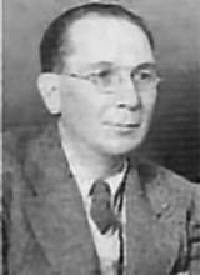 Richard Connell
Richard Connell
1893-1949
Richard Connell, best known for his authorship of the literary masterpiece, “The Most Dangerous Game,” was also accomplished in many other verbal art forms. He was born in 1893 to Richard Connell Sr. and Mary Connell.
At the age of 10, Richard Jr. began reporting local ballgames and was paid 10 cents for each report. At 18, he became lead editor for the city’s paper and received a hefty $16 a week.
Connell attended Georgetown College but left school to become his father’s secretary at the House of Representatives. When his father died, Connell returned to college, attending Harvard University.
Connell fought in World War I but never gave up his writing. He wrote the paper for his camp, stationed in France. Upon returning to America, Connell briefly wrote advertisements and this led him to write some of his earlier short stories, of which he claimed to have written more than 300. He met his wife, Louise Fox, and decided to become a full-time short story author.
In 1923, his story, “A Friend of Napoleon,” won the second annual O. Henry Memorial Prize. The next year, after living in Europe for several years, Connell decided to settle down permanently in California. There, his wife became an editor for a magazine and Connell began to write silent films. In 1924, Connell wrote “The Most Dangerous Game,” which raked in another O. Henry Memorial Prize and the title of “top short story in the country.”
In 1927, Connell finished his first novel, titled The Mad Lover, quickly followed by his second novel, Murder at Sea. That same year, he began writing his first talking picture. The Most Dangerous Game came to the big screen in 1932 and Connell finished his third novel, Playboy, four years later.
At one point in his successful career, Connell was nominated for an Academy Award for Best Original Story with his screenplay of Meet John Doe.
In 1949, Richard Connell died of a heart attack in his Beverly Hills residence.
 Bibliography
Bibliography
Press your browser’s BACK button to return to the previous page.
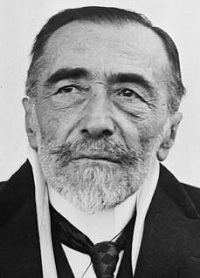 Joseph Conrad
Joseph Conrad
1857-1924
Joseph Conrad (born Jozef Teodor Konrad Korzeniowski; December 3, 1857 Berdichev, Ukraine-August 3, 1924) was an English novelist of Polish ethnicity.
Conrad is regarded as one of the great novelists in English, although he did not speak the language fluently until he was in his 20s (and then always with a marked Polish accent). He wrote stories and novels, predominantly with a nautical setting, that depict trials of the human spirit by the demands of duty and honor. Conrad was a master prose stylist who brought a distinctly non-English tragic sensibility into English literature. While some of his works have a strain of romanticism, he is viewed as a precursor of modernist literature.
Writing in the heyday of the British Empire, Conrad drew upon his experiences in the French and later the British Merchant Navy to create short stories and novels that reflect aspects of a worldwide empire while also plumbing the depths of the human soul.
Conrad died of a heart attack on August 3, 1924.
Source: http://en.wikipedia.org/wiki/Joseph_Conrad
 Bibliography
Bibliography
Press your browser’s BACK button to return to the previous page.
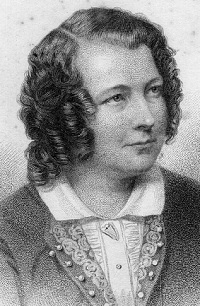 Eliza Cook
Eliza Cook
1818-1889
Eliza Cook (December 24, 1818-September 23, 1889) was an English author, Chartist poet and writer born in London Road, Southwark.
She was the daughter of a local tradesman. She attended the local Sunday Schools and was encouraged by the son of the music master to produce her first volume of poetry. From this she gained confidence and in 1837 began to offer verse to the radical Weekly Dispatch, then edited by William Johnson Fox. She was a staple of its pages for the next 10 years. She also offered material to The Literary Gazette, Metropolitan Magazine and New Monthly.
Her work for The Dispatch and New Monthly was later pirated by George Julian Harney, the Chartist, for The Northern Star. Familiar with the London Chartist movement, in its various sects, she followed many of the older radicals in disagreeing with the O’Brienites and O’Connorites in their disregard for repeal of the Corn Laws. She also preferred the older Radicals’ path of Friendly Societies and self-education.
In 1835, while only 17, she published her first volume, titled Lays of a Wild Harp. In 1838, she published Melaia and Other Poems, and from 1849 to 1854 wrote, edited and published Eliza Cook’s Journal, a weekly periodical she described as one of “utility and amusement.” Cook also published Jottings from My Journal (1860) and New Echoes (1864). In 1863, she was given a Civil List pension income of £100 a year. Her poem, “The Old Armchair” (1838), made hers a household name for a generation, both in England and in America.
Cook was a proponent of political and sexual freedom for women and believed in the ideology of self-improvement through education, something she called “leveling up.” This made her a great favorite with the working-class public. Her works became a staple of anthologies throughout the century.
She died in Wimbledon.
Source: http://en.wikipedia.org/wiki/Eliza_Cook
 Bibliography
Bibliography
Press your browser’s BACK button to return to the previous page.
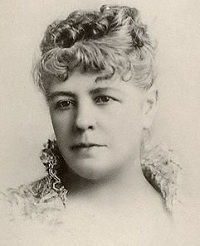 Ina Coolbrith
Ina Coolbrith
1841-1928
Born Josephine Donna Smith, oldest daughter of Don Carlos and Agnes Coolbrith Smith, in Nauvoo, Illinois, March 10,1842, she entered California through the Beckwourth Pass in a covered wagon train in 1852. Her first poems were published in The Los Angeles Times in 1854.
After a brief and tragic marriage at 17, and the death of her child, she moved to San Francisco in 1862, adopting a new name, Ina, and her mother’s maiden surname, Coolbrith. Arriving with a reputation as a poet, she soon began writing for The Golden Era and The Californian, forming intimate friendships with Bret Harte, Charles Warren Stoddard and Mark Twain, among others.
She worked as a journalist on The Overland Monthly. Later, she was librarian of the Mechanics Institute Library, the Bohemian Club Library and was the first librarian of the Oakland Public Library.
She lost her San Francisco home and all of her possessions in the earthquake and fire of 1906. Through the generosity of the best-known California writers of the day, another home was built on Russian Hill, where she lived until the infirmities of age led her to share the home of her niece in Berkeley in 1923 until her death.
Source: http://www.poemhunter.com/ina-d-coolbrith/biography/
 Bibliography
Bibliography
Press your browser’s BACK button to return to the previous page.
 James Fenimore Cooper
James Fenimore Cooper
1826-1851
James Fenimore Cooper (September 15, 1789-September 14, 1851) was a prolific and popular American writer of the early 19th century. He is best remembered as a novelist who wrote numerous sea stories and the historical novels known as The Leatherstocking Tales, featuring frontiersman Natty Bumppo. Among his most famous works is the Romantic novel, The Last of the Mohicans, often regarded as his masterpiece.
Cooper was born in Burlington, New Jersey, the son of William and Elizabeth (Fenimore) Cooper. His father was a United States Congressman. Shortly after his first birthday, his family moved to Cooperstown, New York, a community founded by his father. At 13, Cooper was enrolled at Yale but did not obtain a degree due to being expelled. He obtained work as a sailor on a merchant vessel and, at 18, joined the U.S. Navy. He earned the rank of midshipman before leaving in 1811.
He anonymously published his first book, Precaution (1820). He soon issued several others. In 1823, he published The Pioneers; this was the first of the Leatherstocking series, featuring Natty Bumppo, the resourceful American woodsman at home with the Delaware Indians and, especially, their chief Chingachgook. Cooper’s most famous novel, Last of the Mohicans (1826), became one of the most widely read American novels of the 19th century. The book was written in New York City, where Cooper and his family lived from 1822 to 1826.
In 1826, Cooper moved his family to Europe, where he sought to gain more income from his books as well as provide better education for his children. While overseas, he continued to write. His books published in Paris include The Red Rover and The Water Witch – two of his many sea stories.
In 1832, Cooper entered the lists as a political writer. In a series of letters to The National, a Parisian journal, he defended the United States against a string of charges brought against them by The Revue Britannique. For the rest of his life, he continued skirmishing in print, sometimes for the national interest, sometimes for that of the individual, and not infrequently for both at once.
This opportunity to make a political confession of faith reflected the political turn he already had taken in his fiction, having attacked European anti-republicanism in The Bravo (1831). Cooper continued this political course in The Heidenmauer (1832) and The Headsman, or the Abbaye of Vigneron (1833).
In 1833, Cooper returned to the United States and immediately published “A Letter to My Countrymen,” in which he gave his own version of the controversy and sharply censured his compatriots for their share in it. He followed up with novels and several sets of notes on his travels and experiences in Europe. His Homeward Bound and Home as Found are notable for containing a highly idealized self portrait.
After concluding his last case in court, Cooper returned to writing with more energy and success than he had had for several years. He wrote a history of the U.S. Navy, and returned to the Leatherstocking series with The Pathfinder, or the Inland Sea (1840), The Deerslayer (1841) and other novels. He wrote again on maritime themes, including Ned Myers, or a Life before the Mast, which is of particular interest to naval historians.
He turned again from pure fiction to the combination of art and controversy in which he had achieved distinction with the Littlepage Manuscripts (1845-1846). His next novel was The Crater, or Vulcan’s Peak (1847), in which he attempted to introduce supernatural machinery. Jack Tier (1848) was a remaking of The Red Rover. The Ways of the Hour was his last completed novel.
Cooper spent the last years of his life back in Cooperstown. He died of dropsy on September 14, 1851, the day before his 62nd birthday.
Source: http://en.wikipedia.org/wiki/James_Fenimore_Cooper
 Bibliography
Bibliography
Press your browser’s BACK button to return to the previous page.
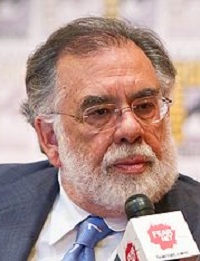 Francis Ford Coppola
Francis Ford Coppola
1939-
Francis Ford Coppola (born April 7, 1939) is an American film director, producer and screenwriter. He is widely acclaimed as one of Hollywood’s most innovative and influential film directors. He epitomized the group of filmmakers known as the New Hollywood – which includes George Lucas, Martin Scorsese, Steven Spielberg, Robert Altman, Woody Allen, William Friedkin, Peter Bogdanovich and Brian De Palma – who emerged in the early 1970s with unconventional ideas that challenged contemporary filmmaking.
He co-wrote the script for Patton (1970), which won an Academy Award for Original Screenplay. His directorial fame escalated with the release of The Godfather (1972), a film that revolutionized movie-making in the gangster genre, earning praise from critics and public alike.
Coppola followed it with a critically successful sequel, The Godfather, Part II (1974), which became the first sequel to win the Academy Award for Best Picture.
The Conversation, which Coppola directed, produced and wrote, was released that same year, winning the Palme d’Or at the 1974 Cannes Film Festival. He next directed Apocalypse Now (1979).
To this day, Coppola is one of only six filmmakers to win two Palme d’Or awards and is the only filmmaker to win both in the same decade.
Source: http://en.wikipedia.org/wiki/Francis_Ford_Coppola
 Bibliography
Bibliography
Press your browser’s BACK button to return to the previous page.
 George Copway
George Copway
1818-1869
George Copway was a Mississaugas Ojibwa writer, lecturer and advocate of Native Americans. His Ojibwa name was Kah-Ge-Ga-Gah-Bowh (Gaagigegaabaw in the Fiero orthography), meaning “He Who Stands Forever.”
Copway was born near Trenton, Ontario, into a traditional Ojibwa family that later converted to Methodism. After conversion, he attended the local mission school and eventually became a missionary for the Methodist church.
In 1840, he met Englishwoman Elizabeth Howell, whose family were farmers in the Toronto area. They married and moved to Minnesota to serve as missionaries. The couple later returned to Canada, where Copway served as a missionary for the Saugeen and Rice Lake Bands of the Ojibwa. In 1846, he was accused and convicted of embezzlement and was defrocked by the Methodists.
He then left Canada for New York City and wrote The Life, History and Travels of Kah-ge-ga-gah-Bowh (1847), the first published book by a Canadian First Nations person.
In 1851, he started his own weekly newspaper in New York City, titled Copway’s American Indian, which ran for approximately three months. He died in Oka, Quebec.
Copway wrote down many details about the Ojibwa Nation. He dedicated a few chapters to the use of birch bark scrolls, the symbolic writing that was used and the meaning of various symbols. These elaborate scrolls were used to remember songs, history and ceremonies. The care and reproduction of these scrolls by a select few is given in great detail. He is an original source for historic details of the 19th century that could have easily been forgotten with great changes over time.
Source: http://en.wikipedia.org/wiki/George_Copway
 Bibliography
Bibliography
Press your browser’s BACK button to return to the previous page.
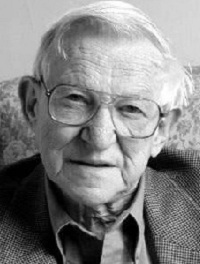 Robert Cormier
Robert Cormier
1925-2000
Robert Edmund Cormier (January 17, 1925-November 2, 2000) was an American author, columnist and reporter, known for his deeply pessimistic, downbeat literature.
Cormier was born to Lucien Joseph and Irma Collins Cormier in Leominster, Massachusetts, in the French-Canadian section of the town called French Hill. He was the second of eight children. His family moved frequently to afford rent, but never left his hometown. Even when he was much older and owned a summer home, it was still 19 miles away from Leominster.
Cormier attended a private Catholic school, St. Cecilia’s Parochial School. He began writing when he was in the first grade. He was praised at school for his poetry. He first realized his aspiration to become a writer in 7th grade, when he was encouraged by a nun to write a poem. He attended Leominster High School, graduating as the president of his class. As a freshman at Fitchburg State College, he had his first short story published for $75 when a college professor, Florence Conlon, sent one of his stories to The Sign, a national Catholic magazine, without his knowledge.
Cormier began his professional writing career scripting radio commercials and went on to become an award-winning journalist. Even though he became widely known, he never stopped writing for his local newspaper, The Fitchburg Sentinel.
Cormier became a full-time writer after the success of his first novel for teenagers, The Chocolate War, followed by others such as I Am the Cheese and After the First Death. He was concerned with the problems facing young people in modern society, and this concern was reflected in his novels. He soon established a reputation as a brilliant and uncompromising writer. Included in his awards is the Margaret A. Edwards Award of the Young Adult Services Division of the American Library Association.
Robert Cormier died of lung cancer in November of 2000.
Source: http://en.wikipedia.org/wiki/Robert_Cormier
 Bibliography
Bibliography
Press your browser’s BACK button to return to the previous page.
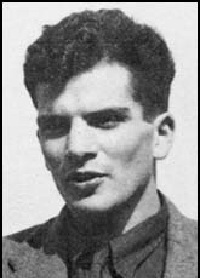 John Cornford
John Cornford
1915-1936
Rupert John Cornford (December 27, 1915-December 28, 1936) was an English poet and communist. He was the son of F.M. Cornford and Frances Cornford.
He was born in Cambridge and named after Rupert Brooke, who was a friend of his parents, but preferred to use his second name. He was educated at Stowe School and Trinity College, Cambridge. As an undergraduate, reading history, he joined the Communist Party of Great Britain. He was two or three years younger than the group of Trinity College communists that included Guy Burgess, Donald Maclean, Kim Philby and James Klugmann.
From 1933 he was directly involved in Communist Party work, in London. During the Spanish Civil War he both recruited in Cambridge for the International Brigade and fought in the war himself, inspired in part by the Germans in the Thalmann Battalion. He saw action at first in a Workers’ Party of Marxist Unification (POUM) unit in Aragon in August 1936. He returned home but and went back in December. He was killed at Lopera, near Cordoba.
Source: http://en.wikipedia.org/wiki/John_Cornford
 Bibliography
Bibliography
Press your browser’s BACK button to return to the previous page.
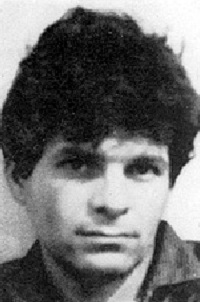 Gregory Corso
Gregory Corso
1930-2001
Gregory Nunzio Corso was born in New York’s Greenwich Village on March 26, 1930, to teenage Italian parents. A year later, his mother moved back to Italy. After living in orphanages and foster homes, at age 11 Corso moved back in with his father, who had just remarried. After two years, however, he ran away; upon being caught he was placed in a boys’ home for two years. He also spent several months in the New York City jail while being held as a material witness in a theft trial. He was returned to his father, but after running away again was sent to Bellevue Hospital for three months “for observation.” At age 16, he began a three-year sentence at Clinton State Prison for another theft. While in prison, he read widely in the classics, including Dostoevsky, Stendahl, Shelley, Thomas Chatterton and Christopher Marlowe, as well as the dictionary; it was there that he also began writing poems.
In a Greenwich Village bar in 1950, the year of his release from prison, he met Allen Ginsberg, who introduced him to experimental poetry. In 1954, he moved to Boston, where again he devoted himself to the library – this time at Harvard University. His first published poems appeared in The Harvard Advocate in 1954, and the publication of his first book, The Vestal Lady on Brattle and Other Poems (1955), was underwritten by Harvard and Radcliffe students. Corso worked at times as a laborer, a newspaper reporter for The Los Angeles Examiner and a merchant seaman.
The following year he went to San Francisco, where he performed readings and interviews with Ginsberg and Jack Kerouac and became known as one of the major figures of the Beat movement. From 1957 to 1958, Corso lived in Paris, where he wrote many of the poems that became his book, Gasoline, published in 1958. From 1970 to 1974, Corso worked on a manuscript that was to be titled Who Am I – Who I Am, but the manuscript was stolen. He did not issue another major work until 1981’s Herald of the Autochthonic Spirit. Among other notable books are Bomb (1958), The Happy Birthday of Death (1960), Long Live Man (1962), Elegaic Feelings American (1970) and Mindfield: New and Selected Poems (1989).
Corso traveled extensively and taught briefly at the State University of New York, Buffalo, and for several summers at the Naropa Institute in Boulder, Colorado. He was dismissed from a SUNY teaching position in 1965 for refusing to sign an affidavit certifying that he was not a member of the Communist Party. He was married three times and had five children.
Gregory Corso died on January 17, 2001, at the age of 70.
Source: http://www.poets.org/poet.php/prmPID/409
 Bibliography
Bibliography
Press your browser’s BACK button to return to the previous page.
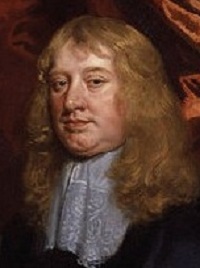 Abraham Cowley
Abraham Cowley
1618-1667
Abraham Cowley (pronounced Cooley) was born in London, the posthumous son of a wealthy London stationer. He was educated at Westminster School and at Trinity College, Cambridge, where he took his B.A. in 1639, was made fellow in 1640 and became M.A. in 1643. Cowley published his first volume of verse, Poetical Blossoms (1633), when he was 15. The collection consisted of five poems, one of which Cowley had written at age 10. He wrote a pastoral drama and a Latin comedy, Naufragium Ioculare (1638), when he was 20.
During the English Civil War, the Parliamentary party deprived Cowley of his fellowship, but he had already left Cambridge to join King Charles at Oxford and, in 1644, followed Queen Henrietta Maria to France as her secretary. His first collection of verse, The Mistress: or Several Copies of Love Verses, was published in 1647.
Upon his return to England in 1654, Cowley was imprisoned; after his release he seems to have worked as a Royalist spy. He began studying medicine at Oxford, becoming an MD in 1657. Cowley’s fellowship at Cambridge was reinstated at the Restoration, and Henrietta Maria granted him land. Thereafter, Cowley lived in retirement at Chertsey, writing essays and studying botany.
A multiple collection of Cowley’s works was published in 1656; it included Mistress, Miscellanies, Pindaric Odes and four books of Davideis, an epic based on King David of the Old Testament. In 1660, Cowley wrote an “Ode upon the Blessed Restoration,” and “A Discourse by Way of Vision Concerning the Government of Oliver Cromwell” in 1661. Also in 1661 appeared his “Proposition for the Advancement of Experimental Philosophy.” A folio edition of his Works, including Cowley’s famous essays, was published in 1668, the year after his death.
Cowley was buried in Westminster Abbey alongside Chaucer and Spenser.
Source: http://www.luminarium.org/sevenlit/cowley/cowleybio.htm
 Bibliography
Bibliography
Press your browser’s BACK button to return to the previous page.
 William Cowper
William Cowper
1731-1800
The first child of Reverend John Cowper and Ann Donne Cowper, William Cowper was born on November 15, 1731, in Berkhampstead, Herefordshire, England. The poet’s mother died when he was six and Cowper was sent to Dr. Pittman’s boarding school, where he was routinely bullied. In 1748, he enrolled in the Middle Temple in order to pursue a law degree. Shortly thereafter, he fell in love with Theodora Cowper, a cousin. Her father did not approve and their relationship ended in 1755. Cowper wrote a sequence of poems, Delia, chronicling this affair but the book was not published until 1825.
In 1763, through family connections, he accepted a clerkship of the journals in the House of Lords. A rival faction, however, challenged his appointment and the ordeal caused Cowper to enter Nathaniel Cotton’s Collegium Insanorum at St. Albans. While there he converted to Evangelicalism. In 1765, he moved to Huntingdon and took a room with the Rev. Morley Unwin and his wife, Mary. Unwin died of a riding accident in 1767 and Cowper and Mary Unwin moved together to the town of Olney in 1768. They were not separated until her death in 1796.
While at Olney, Cowper became close friends with the Evangelical clergyman John Newton; together they co-authored the Olney Hymns, which was first published in 1779 and included Newton’s famous hymn, “Amazing Grace.” Of the 68 hymns Cowper wrote, “Oh for a closer walk with God” and “God moves in a mysterious way” are the most well known.
His first volume of poetry, Poems by William Cowper, of the Inner Temple, was published in 1782 to wide acclaim. His major work was undertaken when Lady Austen complained to Cowper that he lacked a subject. She encouraged him to write about the sofa in his parlor. The Task grew into an opus of six books and nearly five thousand lines.
William Cowper died of dropsy on April 25, 1800.
Source: http://www.poets.org/poet.php/prmPID/608
 Bibliography
Bibliography
Press your browser’s BACK button to return to the previous page.
 George Crabbe
George Crabbe
1754-1832
George Crabbe (December 24, 1754-February 3, 1832) was an English poet and naturalist. He was born in Aldeburgh, Suffolk, the son of a tax collector, and developed his love of poetry as a child. In 1768, he was apprenticed to a local doctor, who taught him little, and in 1771 he changed masters and moved to Woodbridge. There he met his future wife, Sarah Elmy, who accepted his proposal and had the faith and patience not only to wait for Crabbe but to encourage his verse writing. His first major work, a poem entitled “Inebriety,” was self-published in 1775. By this time he had completed his medical training and had decided to take up writing seriously.
In 1780, he went to London, where he had little success but eventually made an impression on Edmund Burke, who helped him get his poem, “The Library,” published in 1781. In the meantime, Crabbe’s religious nature had made itself felt and he was ordained a clergyman and became chaplain to the Duke of Rutland at Belvoir Castle in Leicestershire.
The two works for which Crabbe became best known were “The Village” (1783) and “The Borough” (1810), both lengthy poems dealing with the way of life he had experienced. In 1783, he also married Sarah. In 1814, he became Rector of Trowbridge in Wiltshire, where he remained.
By the time of his death, he was well regarded and a friend of William Wordsworth, Sir Walter Scott and other major literary figures of the time.
Source: http://en.wikipedia.org/wiki/George_Crabbe
 Bibliography
Bibliography
Press your browser’s BACK button to return to the previous page.
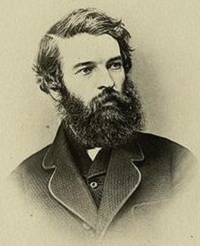 Christopher Pearse Cranch
Christopher Pearse Cranch
1813-1892
Christopher Pearse Cranch (March 8, 1813-January 20, 1892) was an American writer and artist.
Cranch was born in the Washington, D.C. He attended Columbian College and Harvard Divinity School. He briefly held a position as a Unitarian minister. Later, he pursued various occupations: A magazine editor, caricaturist, children’s fantasy writer (the Huggermugger books), poet (The Bird and the Bell with Other Poems in 1875), translator and landscape painter. He lived most of his life in Cambridge, Massachusetts.
Though not one of its founding members, Cranch became associated with the Transcendental Club; his connection with the Transcendentalists ultimately diminished his demand as a minister. Cranch’s caricatures of Ralph Waldo Emerson were later collected as Illustrations of the New Philosophy: Guide. His poetry was published in The Harbinger and The Dial, among other publications.
As a painter, Cranch painted landscapes along the lines of Thomas Cole, the Hudson River School and the Barbizon School in France. In one foray into historical painting, Cranch depicted the burning of P.T. Barnum’s American Museum in New York City. Later in life, Cranch painted scenes from Venice and Italy.
Source: http://en.wikipedia.org/wiki/Christopher_Pearse_Cranch
 Bibliography
Bibliography
Press your browser’s BACK button to return to the previous page.
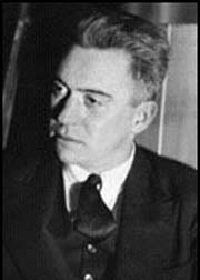 Hart Crane
Hart Crane
1899-1932
Harold Hart Crane (July 21, 1899-April 27, 1932) was an American poet. Finding both inspiration and provocation in the poetry of T.S. Eliot, Crane wrote modernist poetry that is difficult, highly stylized and very ambitious in its scope. In his most ambitious work, The Bridge, Crane sought to write an epic poem in the vein of The Waste Land that expressed something more sincere and optimistic than the ironic despair that Crane found in Eliot’s poetry.
Hart Crane was born in Garrettsville, Ohio. His father, Clarence, was a successful Ohio businessman who had made his fortune in the candy business with chocolate bars. He originally held the patent for the Life Saver, but sold his interest to another businessman just before the candy became popular. Hart dropped out of high school and headed to New York City. Between 1917 and 1924 he moved back and forth between New York and Cleveland, working as an advertising copywriter and a worker in his father’s factory.
Throughout the early 1920s, small but well-respected literary magazines published some of Crane’s lyrics, gaining him, among the avant-garde, a respect that White Buildings (1926), his first volume, ratified and strengthened. White Buildings contains many of Crane’s best lyrics, including “For the Marriage of Faustus and Helen” and “Voyages,” a powerful sequence of erotic poems. “Faustus and Helen” was part of a larger artistic struggle to meet modernity with something more than despair. Crane identified T.S. Eliot with that kind of despair and, while he acknowledged the greatness of The Waste Land, he also said it was “so damned dead,” an impasse and a refusal to see “certain spiritual events and possibilities.” Crane’s self-appointed work would be to bring those spiritual events and possibilities to poetic life and so create “a mystical synthesis of America.” This ambition would finally issue in The Bridge (1930), where the Brooklyn Bridge is both the poem’s central symbol and its poetic starting point. The Bridge received poor reviews, but Crane’s sense of his own failure became crushing. It was during the late ’20s, while he was finishing The Bridge, that his drinking, always a problem, became notably worse.
Crane visited Mexico in 1931-32 on a Guggenheim Fellowship and his drinking continued as he suffered from bouts of alternating depression and elation. Heading back to New York from Mexico onboard the steamship SS Orizaba, Crane jumped overboard into the Gulf of Mexico. Although he had been drinking heavily and left no suicide note, witnesses believed his intentions to be suicidal, as several reported that he exclaimed “Goodbye, everybody!” before throwing himself overboard. His body was never recovered.
Source: http://en.wikipedia.org/wiki/Hart_Crane
 Bibliography
Bibliography
Press your browser’s BACK button to return to the previous page.
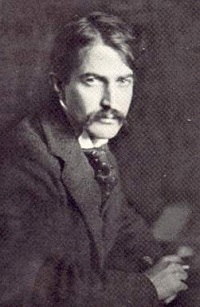 Stephen Crane
Stephen Crane
1871-1900
Stephen Crane (November 1, 1871-June 5, 1900) was an American novelist, short story writer, poet and journalist. Prolific throughout his short life, he wrote notable works in the Realist tradition as well as early examples of American Naturalism and Impressionism. He is recognized by modern critics as one of the most innovative writers of his generation.
The eighth surviving child of Methodist Protestant parents, Crane began writing at the age of four and had published several articles by the age of 16. Having little interest in university studies, he left school in 1891 and began work as a reporter and writer. Crane’s first novel was the 1893 Bowery tale, Maggie: A Girl of the Streets, which critics generally consider the first work of American literary Naturalism. He won international acclaim for his 1895 Civil War novel, The Red Badge of Courage, which he wrote without any battle experience.
In 1896, Crane endured a highly publicized scandal after acting as witness for a suspected prostitute. Late that year he accepted an offer to cover the Spanish-American War as a war correspondent. As he waited in Jacksonville, Florida, for passage to Cuba, he met Cora Taylor, the madam of a brothel, with whom he would have a lasting relationship. While en route to Cuba, Crane’s ship sank off the coast of Florida, leaving him adrift for several days in a dinghy. His ordeal was later described in “The Open Boat.” During the final years of his life, he covered conflicts in Greece and lived in England with Cora, where he befriended writers such as Joseph Conrad and H.G. Wells. Plagued by financial difficulties and ill health, Crane died of tuberculosis in a Black Forest sanatorium at the age of 28.
At the time of his death, Crane had become an important figure in American literature. He was nearly forgotten, however, until two decades later when critics revived interest in his life and work. Stylistically, Crane’s writing is characterized by vivid intensity, distinctive dialects and irony. Common themes involve fear, spiritual crises and social isolation. His writing made a deep impression on 20th century writers, most prominent among them Ernest Hemingway, and is thought to have inspired the Modernists and the Imagists.
Source: http://en.wikipedia.org/wiki/Stephen_Crane
 Bibliography
Bibliography
Press your browser’s BACK button to return to the previous page.
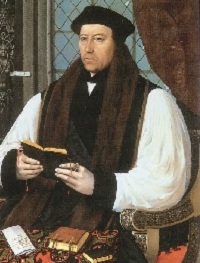 Thomas Cranmer
Thomas Cranmer
1489-1556
Thomas Cranmer (July 2, 1489-March 21, 1556) was a leader of the English Reformation and Archbishop of Canterbury during the reigns of Henry VIII, Edward VI and, for a short time, Mary I. He helped build a favorable case for Henry’s divorce from Catherine of Aragon that resulted in the separation of the English Church from union with the Holy See. Along with Thomas Cromwell, he supported the principle of Royal Supremacy, in which the king was considered sovereign over the Church within his realm.
During Cranmer’s tenure as Archbishop of Canterbury, he was responsible for establishing the first doctrinal and liturgical structures of the reformed Church of England. Under Henry’s rule, Cranmer did not make many radical changes in the Church, due to power struggles between religious conservatives and reformers. However, he succeeded in publishing the first officially authorized vernacular service, The Exhortation and Litany.
When Edward came to the throne, Cranmer was able to promote major reforms. He wrote and compiled the first two editions of The Book of Common Prayer, a complete liturgy for the English Church. With the assistance of several Continental reformers to whom he gave refuge, he developed new doctrinal standards in areas such as the Eucharist, clerical celibacy, the role of images in places of worship and the veneration of saints. Cranmer promulgated the new doctrines through The Prayer Book, The Homilies and other publications.
Cranmer was tried for treason and heresy after Mary I, a Roman Catholic, came to the throne. Imprisoned for more than two years and under pressure from Church authorities, he made several recantations and apparently reconciled himself with the Roman Catholic Church. However, on the day of his execution, he dramatically withdrew his recantations to die a heretic to Roman Catholics and a martyr to others. His legacy lives on within the Church of England through The Book of Common Prayer and The Thirty-Nine Articles, an Anglican statement of faith derived from his work.
Source: http://en.wikipedia.org/wiki/Thomas_Cranmer
 Bibliography
Bibliography
Press your browser’s BACK button to return to the previous page.
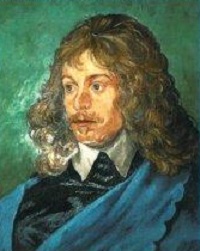 Richard Crashaw
Richard Crashaw
1613-1649
Richard Crashaw (c. 1613-August 25, 1649), English poet, styled “the divine,” was part of the 17th century Metaphysical School of poets.
Born in London, Richard Crashaw was the son of a strongly anti-Catholic divine, Dr. William Crashaw (1572-1626); his father was, however, attracted by Catholic devotion, for he translated several Latin hymns of the Jesuits. Richard Crashaw was originally put to school at Charterhouse, but in July 1631 he was admitted to Pembroke College, Cambridge, where he took the degree of B.A. in 1634. The publication of “Herbert’s Temple” in 1633 seems to have finally determined the bias of his genius in favor of religious poetry, and next year he published his first book, Epigrammatum sacrorum liber, a volume of Latin verses.
In March 1636, he removed to Peterhouse, was made a fellow of that college in 1637 and proceeded to take his M.A. in 1638. Ordained in the Church of England, he served as the minister for the Church of St. Mary the Less, Cambridge, from 1638 to 1643. It was about this time that he made the acquaintance and secured the lasting friendship of Abraham Cowley. In 1641, he is said to have gone to Oxford, but only for a short time; for when, in 1643, Cowley left Cambridge to seek a refuge at Oxford, Crashaw remained behind and was forcibly ejected from his fellowship in 1644. In the confusion of the civil wars he escaped to France, where he finally embraced the Catholic faith, toward which he had long been tending but was never ordained a priest in the Church of Rome.
During his exile, his religious and secular poems were collected by an anonymous friend and published under the title of Steps to the Temple and The Delights of the Muses, in one volume, in 1646. This same year, Cowley found him in great destitution at Paris and induced Queen Henrietta Maria to extend toward him what influence she still possessed. At her introduction he proceeded to Italy, where he became attendant to Giovanni Battista Maria Cardinal Pallotta at Rome and stayed at the famous Venerable English College. In 1648, he published two Latin hymns at Paris.
He remained until 1649 in the service of the cardinal, to whom he had a great personal attachment; but his retinue contained persons whose violent and licentious behavior was a source of ceaseless vexation to the sensitive English mystic. At last his denunciation of their excesses became so public that the animosity of those persons was excited against him, and in order to shield him from their revenge he was sent by the cardinal in 1649 to Loreto, where he was made a canon of the Holy House.
In less than three weeks, however, he sickened of fever and died, not without grave suspicion of having been poisoned. He was buried in the Lady chapel at Loreto.
Source: http://en.wikipedia.org/wiki/Richard_Crashaw
 Bibliography
Bibliography
Press your browser’s BACK button to return to the previous page.
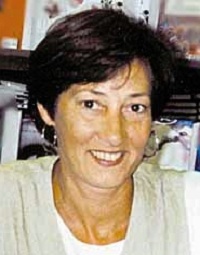 Sharon Creech
Sharon Creech
1945-
Sharon Creech (born July 29, 1945) is an American novelist of children’s fiction. Her novel, Walk Two Moons, received the 1995 Newbery Medal; The Wanderer was a 2001 Newbery Honor book and Ruby Holler received the 2002 Carnegie Medal. In 2007, Heartbeat was a finalist in the Junior Division (4th to 6th grades) of the Young Reader’s Choice Awards, sponsored by the Pacific Northwest Library Association.
Creech was born in South Euclid, Ohio. She has three brothers, Dennis, Doug and Tom, and one sister, Sandy, upon whom she based the characters in Absolutely Normal Chaos and Ruby Holler. Her brother Tom currently resides in Kent, Ohio, with his wife, Marty, and their three children, Sandra, Mary and Annie. Annie was the basis of a character in Heartbeat. Every year, Creech’s family visited Quincy, Kentucky, the inspiration for the town of Bybanks, which appeared in Chasing Redbird, Bloomability, Walk Two Moons and (by reference) The Wanderer. Her grandmother plays a part in Granny Torrelli Makes Soup.
She received a B.A. from Hiram College and her M.A. from George Mason University. In 1979, she moved to Surrey, England. In addition to being a writer, Creech has taught English and writing at a high school and a boarding school, The American School in Switzerland (TASIS). She drew the setting of Bloomability from her experiences in Switzerland. She is married to Lyle Rigg, who was the headmaster of The Pennington School in Pennington, New Jersey, with whom she has two children, Rob and Karin.
Source: http://en.wikipedia.org/wiki/Sharon_Creech
 Bibliography
Bibliography
Press your browser’s BACK button to return to the previous page.
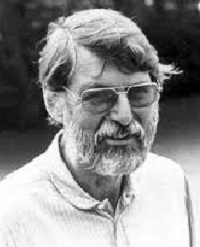 Robert Creeley
Robert Creeley
1926-2005
Robert Creeley (May 21, 1926-March 30, 2005) was an American poet and author of more than 60 books. He is usually associated with the Black Mountain poets, though his verse aesthetic diverged from that school’s.
Creeley was born in Arlington, Massachusetts, and grew up in Acton. He was raised by his mother with one sister, Helen. At the age of four, he lost his left eye. He attended the Holderness School in New Hampshire. He entered Harvard University in 1943 but left to serve in the American Field Service in Burma and India in 1944-1945. He returned to Harvard in 1946 but eventually took his B.A. from Black Mountain College in 1955, teaching some courses there as well. When Black Mountain closed in 1957, Creeley moved to San Francisco, where he met Jack Kerouac and Allen Ginsberg.
From 1951 to 1955, Creeley and his wife, Ann, lived with their three children on the Spanish island of Mallorca. Creeley wrote about half of his published prose while living on the island, including a short story collection, The Gold Diggers, and a novel, The Island.
An M.A. from the University of New Mexico followed in 1960. He began his academic career by teaching at the prestigious Albuquerque Academy, starting in around 1958 until about 1960 or 1961. From 1990 to 2003, he lived with his family in Black Rock, in a converted firehouse at the corner of Amherst and East streets . At the time of his death, he was in residence with the Lannan Foundation in Marfa, Texas.
He first received fame in 1962 for his poetry collection, For Love. He would go on to win the Bollingen Prize, among others, and held the position of the New York Poet Laureate from 1989 until 1991. He was elected a Fellow of the American Academy of Arts and Sciences in 2003.
In his later years he was an advocate of, and a mentor to, many younger poets, as well as to others outside of the poetry world. He went to great lengths to be supportive to many and he had great sympathy for “ordinary” people. Being responsive appeared to be essential to his personal ethics, and he seemed to take this responsibility extremely seriously, in both his life and his craft. In his later years, when he became well-known, he would go to lengths to make strangers, who approached him as a well-known author, feel comfortable. In his last years, he used the Internet to keep in touch with many younger poets and friends. He was rather shy, somewhat cautious but not at all afraid; he would stand up in situations where many others would not.
Robert Creeley died at sunrise on March 30, 2005, in Odessa, Texas, of complications from pneumonia.
Source: http://en.wikipedia.org/wiki/Robert_Creeley
 Bibliography
Bibliography
Press your browser’s BACK button to return to the previous page.
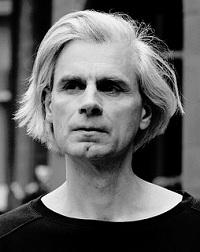 Martin Crimp
Martin Crimp
1956-
Martin Andrew Crimp (born February 14, 1956, Dartford, Kent) is a British playwright.
Sometimes described as a practitioner of the “in-yer-face” school of contemporary British drama, Crimp rejects the label. He is notable for the astringency of his dialogue, a tone of emotional detachment, a bleak view of human relationships – none of his characters experience love or joy – and, latterly, a concern for theatrical form and language rather than an interest in narrative.
The son of John Crimp, a British Rail signalling engineer, and his wife Jennie, Crimp’s family moved in 1960 to Streatham, where he attended a local primary school before winning a scholarship to Dulwich College. But when his father was transferred to York, he went to the nearby Pocklington School, where he showed an aptitude for languages, music, English literature and theatre. In 1975-78 he read English at St. Catharine’s College, Cambridge, where his first play, Clang, was staged. Before establishing himself as a playwright, he put together An Anatomy, a collection of short stories, and also wrote a novel, Still Early Days.
His first six plays were performed at the Orange Tree Theatre in Richmond. Seven of his plays, and his second Ionesco translation, have also been presented at the Royal Court Theatre, London, where he became writer-in-residence in 1997. His plays are now frequently performed in Europe. He has also been an assiduous translator of European texts.
Possibly his most highly regarded, and certainly his boldest and most innovative play, is Attempts on Her Life, first performed at the Royal Court in 1997.
Source: http://en.wikipedia.org/wiki/Martin_Crimp
 Bibliography
Bibliography
Press your browser’s BACK button to return to the previous page.
 Ann Batten Cristall
Ann Batten Cristall
c. 1768-1795?
Ann Batten Cristall, daughter of a Scottish mariner, moved with her family to London at an early age; she published her one volume, Poetical Sketches, with Joseph Johnson and dedicated a poem to George Dyer. The book is noticed, without further information, in The Biographical Dictionary of Living Authors (1816). Her brother Joshua also had some reputation as an artist.
Source: http://spenserians.cath.vt.edu/authorrecord.php?action=GET&recordid=33643
 Bibliography
Bibliography
Press your browser’s BACK button to return to the previous page.
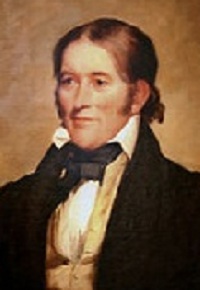 Davy Crockett
Davy Crockett
1786-1836
David Crockett (August 17, 1786-March 6, 1836) was a celebrated 19th century American folk hero, frontiersman, soldier and politician. He is referred to in popular culture as Davy Crockett and, after the 1950s, by the epithet “King of the Wild Frontier.” He represented Tennessee in the U.S. House of Representatives, served in the Texas Revolution and died at the Battle of the Alamo.
Crockett grew up in East Tennessee, where he gained a reputation for hunting and storytelling. After being elected to the rank of colonel in the militia of Lawrence County, Tennessee, he was elected to the Tennessee state legislature in 1821. In 1826, Crockett was elected to the U.S. House of Representatives. Congressman Crockett vehemently opposed many of the policies of President Andrew Jackson, most notably the Indian Removal Act. Crockett’s opposition to Jackson’s policies led to his defeat in the 1834 elections, prompting his angry departure to Texas shortly thereafter.
In early 1836, Crockett took part in the Texas Revolution and was killed at the Battle of the Alamo in March.
Source: http://en.wikipedia.org/wiki/Davy_Crockett
 Bibliography
Bibliography
Press your browser’s BACK button to return to the previous page.
 Victor Hernandez Cruz
Victor Hernandez Cruz
1949-
Victor Hernandez Cruz (born February 6, 1949 in Aguas Buenas, Puerto Rico) is a Puerto Rican poet.
He moved to New York in 1954. He began writing at 15 and published his first collections of poetry in the late 1960s.
Hernandez Cruz is distinguished member of the famed Nuyorican school of poets (also referred to as the Nuyorican Movement). He tweaks syntactic conventions of English and Spanish to communicate his own voice.
He was Chancellor of the Academy of American Poets.
Source: http://en.wikipedia.org/wiki/Victor_Hern%C3%A1ndez_Cruz
 Bibliography
Bibliography
Press your browser’s BACK button to return to the previous page.
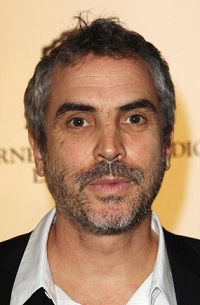 Alfonso Cuaron
Alfonso Cuaron
1961-
Alfonso Cuaron Orozco (born November 28, 1961) is a Mexican film director, screenwriter and film producer, best known for his films Children of Men, Harry Potter and the Prisoner of Azkaban, Y tu mama tambien and A Little Princess.
Alfonso Cuaron was born in Mexico City and is the son of Alfredo Cuaron, a nuclear physicist who worked for the United Nations’ International Atomic Energy Agency for many years.
Cuaron studied Philosophy at the National Autonomous University of Mexico (UNAM) and filmmaking at CUEC (Centro Universitario de Estudios Cinematograficos), a faculty of the same University. There, he met director Carlos Marcovich and cinematographer Emmanuel Lubezki, and they made what would be his first short film, Vengeance Is Mine. A controversy caused by the fact that the film was shot in English was the reason he was expelled from the film school.
Cuaron began working in television in Mexico, first as a technician and then as a director. His television work led to assignments as an assistant director for several Latin American film productions, including Gaby: A True Story and Romero and, in 1991, he landed his first big-screen directorial assignment.
Source: http://en.wikipedia.org/wiki/Alfonso_Cuar%C3%B3n
 Bibliography
Bibliography
Press your browser’s BACK button to return to the previous page.
 Countee Cullen
Countee Cullen
1903-1946
Countee Cullen (born May 30, 1903, Louisville, Kentucky-died January 9, 1946, New York, New York) was one of the finest American poets of the Harlem Renaissance.
Reared by a woman who was probably his paternal grandmother, Countee at age 15 was unofficially adopted by the Reverend F.A. Cullen, minister of Salem M.E. Church, one of Harlem’s largest congregations. He won a citywide poetry contest as a schoolboy and saw his winning stanzas widely reprinted. At New York University (B.A., 1925) he won the Witter Bynner Poetry Prize and was elected to Phi Beta Kappa. Major American literary magazines accepted his poems regularly, and his first collection of poems, Color (1925), was published to critical acclaim before he had finished college.
Cullen received an M.A. degree from Harvard University in 1926 and worked as an assistant editor for Opportunity magazine. In 1928, just before leaving the United States for France (where he would study on a Guggenheim Fellowship), Cullen married Yolande Du Bois, daughter of W.E.B. Du Bois (divorced 1930). After publication of The Black Christ and Other Poems (1929), Cullen’s reputation as a poet waned. From 1934 until the end of his life he taught in New York City public schools. Most notable among his other works are: Copper Sun (1927), The Ballad of the Brown Girl (1928) and The Medea and Some Poems (1935). His novel, One Way to Heaven (1932), depicts life in Harlem.
Cullen’s use of racial themes in his verse was striking at the time, and his material is always fresh and sensitively treated. He drew some criticism, however, because he was heavily influenced by the Romanticism of John Keats and preferred to use classical verse forms rather than rely on the rhythms and idioms of his black American heritage.
Source: http://www.biography.com/people/countee-cullen-38950
 Bibliography
Bibliography
Press your browser’s BACK button to return to the previous page.
 E.E. Cummings
E.E. Cummings
1894-1962
Edward Estlin Cummings (October 14, 1894-September 3, 1962), popularly known as E. E. Cummings, with the abbreviated form of his name often written by others in lowercase letters as e.e. cummings, was an American poet, painter, essayist, author and playwright. His body of work encompasses approximately 2,900 poems, two autobiographical novels, four plays and several essays, as well as numerous drawings and paintings. He is remembered as a pre-eminent voice of 20th century poetry, as well as one of the most popular.
Born into a Unitarian family, Cummings exhibited transcendental leanings his entire life. As he grew in maturity and age, Cummings moved more toward an “I, Thou” relationship with God. His journals are replete with references to “le bon Dieu” as well as prayers for inspiration in his poetry and artwork. Cummings “also prayed for strength to be his essential self, and for relief of spirit in times of depression.”
Cummings wanted to be a poet from childhood and wrote poetry daily from the age of eight to 22, exploring assorted forms. He went to Harvard and developed an interest in modern poetry, which ignored conventional grammar and syntax, aiming for a dynamic use of language. On graduating he worked for a book dealer.
In 1917, with World War I ongoing in Europe, Cummings enlisted in the Norton-Harjes Ambulance Corps, along with his college friend, John Dos Passos. Due to an administrative mixup, Cummings was not assigned to an ambulance unit for five weeks, during which time he stayed in Paris. He fell in love with the city, to which he would return throughout his life.
During their service in the ambulance corps, they sent letters home that drew the attention of the military censors, and were known to prefer the company of French soldiers over fellow ambulance drivers. The two openly expressed anti-war views; Cummings spoke of his lack of hatred for the Germans. On September 21, 1917, just five months after his belated assignment, he and a friend, William Slater Brown, were arrested by the French military on suspicion of espionage and undesirable activities. They were held for 3½ months in a military detention camp at the Depot de Triage in La Ferte-Mace, Orne, Normandy.
They were imprisoned with other detainees in a large room. Cummings’ father failed to obtain his son’s release through diplomatic channels and in December 1917 wrote a letter to President Wilson. Cummings was released on December 19, 1917, and Brown was released two months later. Cummings used his prison experience as the basis for his novel, The Enormous Room (1922). He returned to the United States on New Year’s Day 1918. Later in 1918, he was drafted into the Army. He served in the 12th Division at Camp Devens, Massachusetts, until November 1918.
Cummings returned to Paris in 1921 and remained there for two years before returning to New York. His collection, Tulips and Chimneys, was published in 1923 and his inventive use of grammar and syntax is evident. The book was heavily cut by his editor. XLI Poems was then published in 1925. With these collections, Cummings made his reputation as an avant garde poet.
In 1952, his alma mater, Harvard, awarded Cummings an honorary seat as a guest professor. The Charles Eliot Norton Lectures he gave in 1952 and 1955 were later collected as i: six nonlectures.
He died of a stroke on September 3, 1962, at the age of 67, at the Memorial Hospital in North Conway, New Hampshire.
Source: http://en.wikipedia.org/wiki/E._E._Cummings
 Bibliography
Bibliography
Press your browser’s BACK button to return to the previous page.
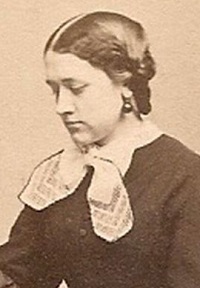 Maria Susanna Cummins
Maria Susanna Cummins
1827-1866
Born in Salem in 1827 to a family of some social standing and relative affluence, Maria Susanna Cummins moved, while still quite young, with her family to Dorchester, at that time still a rural suburb separate from Boston. Maria’s father, David, had become a judge of the court of common pleas of Norfolk County. Her mother was David’s third wife. He already had four children prior to this marriage, and three more followed Maria, making eight children in the family. Families of stepbrothers and sisters were common, so the characters of stepmother or father, orphan, etc., of the fiction of the day were not unrelated to the reality of the times.
The Cummins Colonial home may have been the model for the country seat in the suburb of D—— in The Lamplighter. Maria attended Mrs. Charles Sedgwick’s Young Ladies’ School in Lenox, Massachusetts. Sedgwick’s husband, Charles, had a sister, Catharine Maria Sedgwick, who was the nation’s foremost woman author and who lived with her brother and maintained an occasional literary salon. Maria could not have failed to be influenced by her association with this author.
Cummins’ The Lamplighter, first published in 1854 when she was 27, sold 40,000 copies in the first month and 100,000 by the end of the year. She was able to write a total of only four books: The Lamplighter (1854), Mabel Vaughan (1857), El Fureidis (1860) and Haunted Hearts (1864).
She became seriously ill 10 years later and died in 1866.
Source: http://www.dorchesteratheneum.org/page.php?id=77
 Bibliography
Bibliography
Press your browser’s BACK button to return to the previous page.
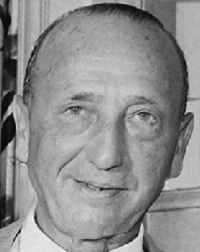 Michael Curtiz
Michael Curtiz
1886-1962
Michael Curtiz (December 24, 1886-April 10, 1962) was an Academy Award-winning Hungarian-American film director. He had early credits as Mihaly Kertesz and Michael Kertesz. He directed more than 50 films in Europe and more than 100 in the United States, many of them cinema classics, including The Adventures of Robin Hood, Captain Blood, Dodge City, The Sea Hawk, Angels with Dirty Faces, Casablanca (for which he won the Academy Award for Best Director), Yankee Doodle Dandy and White Christmas.
He thrived in the heyday of the Warner Bros. studio in the 1930s and ’40s. He was less successful from the late 1940s onward, when he attempted to move from studio direction into production and freelance work, but he continued working until shortly before his death.
Curtiz was born Kertesz Kaminer Mano to a Jewish family in Budapest, Hungary (then Austria-Hungary). He studied at Markoszy University and the Royal Academy of Theater and Art, Budapest, before beginning his career as an actor and director as Mihaly Kertesz at the National Hungarian Theater in 1912.
Curtiz left Hungary when the film industry was nationalized in 1919, during the brief Hungarian Soviet Republic, and soon settled in Vienna. He made at least 21 films for Sascha Films, among them the Biblical epics Sodom und Gomorrha (1922) and Die Sklavenkonigin (1924). The latter, released in the U.S. as Moon of Israel, caught the attention of Jack Warner, who hired Curtiz for his own studio with the intention of having him direct a similar film for Warner Brothers – Noah’s Ark, which was eventually produced in 1928.
Curtiz arrived in the United States in 1926. He took the anglicized name “Michael Curtiz.” He had a lengthy and prolific Hollywood career, with directing credits on more than 100 films in many film genres. During the ’30s, Curtiz directed such films as Mystery of the Wax Museum, Doctor X and The Kennel Murder Case. In the mid-30s, he began the highly successful cycle of adventure films that included Captain Blood (1935), The Charge of the Light Brigade (1936), The Adventures of Robin Hood (1938), Dodge City, The Private Lives of Elizabeth and Essex (1939), The Sea Hawk and Santa Fe Trail (1940).
Prime examples of his work in the 1940s are The Sea Wolf (1941), Casablanca (1942) and Mildred Pierce (1945). During this period he also directed the pro-Soviet propaganda film, Mission to Moscow (1943), which was commissioned at the request of president Franklin D. Roosevelt in order to aid the wartime effort. Other Curtiz efforts included Four Daughters (1938), Yankee Doodle Dandy (1942), Life with Father (1947), Young Man with a Horn and The Breaking Point (1950).
After leaving Warners, Curtiz continued to direct on a freelance basis from 1954 onward, including The Egyptian (1954) for Fox; White Christmas (1954), We’re No Angels (1955) and King Creole (1958) for Paramount.
His final film, The Comancheros, was released six months before his death from cancer on April 10, 1962.
Source: http://en.wikipedia.org/wiki/Michael_Curtiz
 Bibliography
Bibliography
Press your browser’s BACK button to return to the previous page.
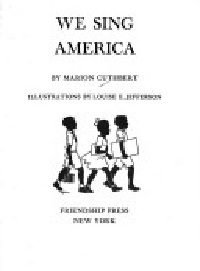 Marion Vera Cuthbert
Marion Vera Cuthbert
1896-1989
An essayist; no biographical data available.
 Bibliography
Bibliography
Press your browser’s BACK button to return to the previous page.
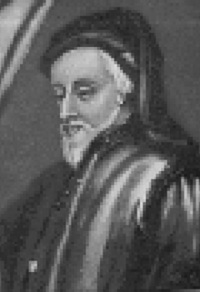 Cynewulf
Cynewulf
800s
Cynewulf (meaning “kin wolf”) is one of 12 Anglo-Saxon poets known by name today and one of four whose work survives. He is famous for his religious compositions and is regarded as one of the pre-eminent figures of Old English Christian poetry. Posterity knows of his name by means of runic signatures that are interwoven into the four poems that comprise his scholastically recognized corpus. These poems are: “The Fates of the Apostles,” “Juliana,” “Elene” and “Christ II” (also referred to as “The Ascension”).
Unlike his putative literary predecessor, Caedmon, whose biography is solely derived from Bede’s Ecclesiastical History, Cynewulf’s life is a veritable mystery to scholars.
While no exact deduction of Cynewulf’s date is accepted, it is likely he flourished in the 9th century.
Source: http://en.wikipedia.org/wiki/Cynewulf
 Bibliography
Bibliography